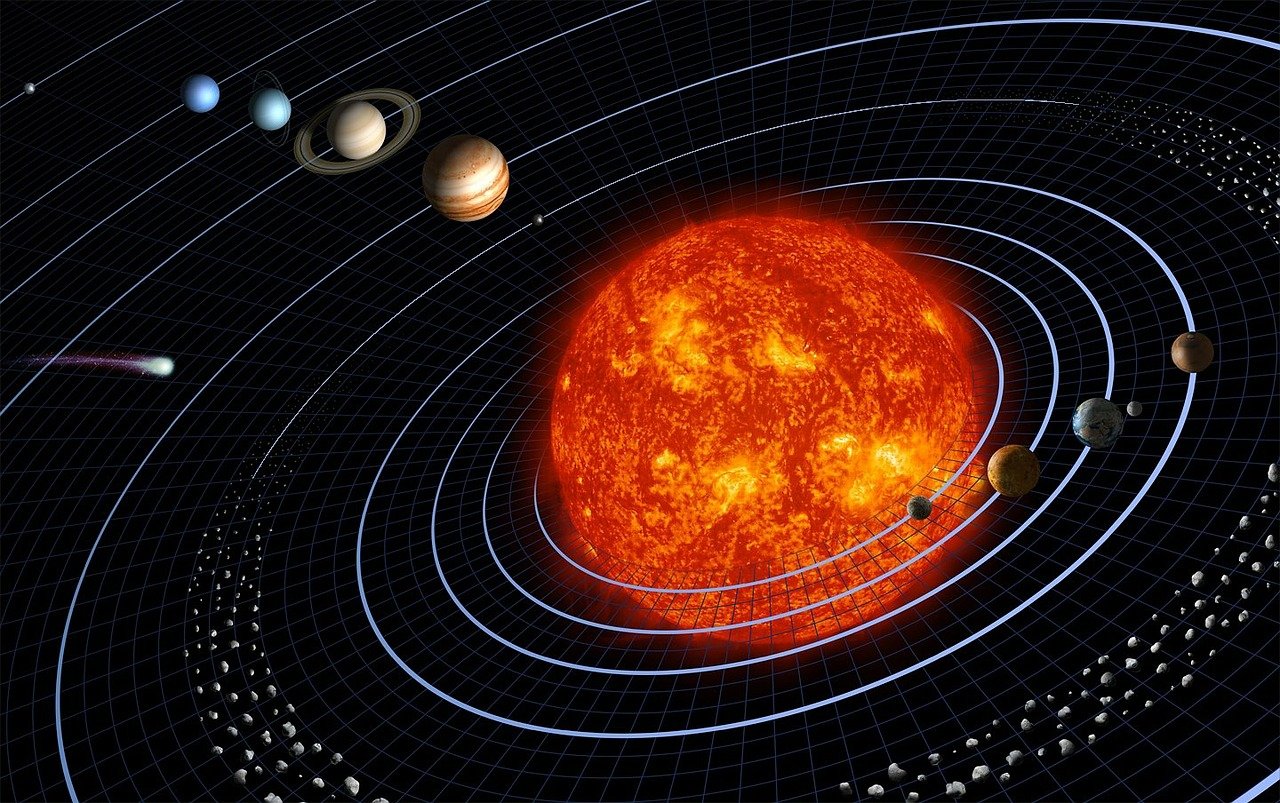
The Study of Solar System
The solar system is a vast and fascinating place, consisting of the Sun, eight planets, their moons, dwarf planets, asteroids, comets, and various other celestial bodies. The solar system refers to a vast system comprising the Sun and all the celestial objects that are bound to it through gravitational attraction. It includes:
The Sun: A star at the center of the solar system, responsible for providing light, heat, and energy to the planets.
Planets: There are eight recognized planets in our solar system, categorized into two groups:
Inner Planets (Terrestrial Planets): Mercury, Venus, Earth, and Mars. These planets are rocky and relatively smaller in size compared to the outer planets.
Outer Planets (Gas Giants): Jupiter, Saturn, Uranus, and Neptune. These planets are larger and primarily composed of gases like hydrogen and helium.
Dwarf Planets: Celestial bodies that orbit the Sun and are spherical in shape but are not categorized as full-fledged planets. Pluto, Eris, Haumea, Makemake, and Ceres are examples.
Moons (Natural Satellites): Numerous moons orbit around planets within the solar system. For instance, Earth has one moon, while gas giants like Jupiter and Saturn have many moons.
Asteroids: Small rocky objects that primarily reside in the asteroid belt between Mars and Jupiter.
Comets: Made up of ice, dust, and rocky material, comets have highly eccentric orbits that take them closer to the Sun periodically.
Meteoroids and Meteorites: These are fragments of asteroids or comets that enter the Earth’s atmosphere. Meteoroids are in space, while meteorites are the remnants that survive and hit the Earth’s surface.
The solar system formed around 4.6 billion years ago from a giant rotating cloud of gas and dust called the solar nebula. Over time, gravity caused this cloud to collapse, forming the Sun at its center and the planets and other celestial bodies in orbit around it. The study of the solar system involves astronomy, astrophysics, planetary science, and various space missions conducted by space agencies worldwide to explore and learn more about these celestial bodies and their characteristics.
The solar system we call home is a fascinating realm filled with celestial wonders, each planet boasting its unique characteristics and mysteries.
Let’s embark on a cosmic voyage through this captivating expanse and discover the diverse worlds that orbit the Sun.
Mercury: The Swift Messenger
Closest to the Sun, Mercury is a small, rocky planet shrouded in extremes. Its surface temperature swings dramatically between scorching hot days and freezing nights due to its lack of atmosphere to retain heat.
Venus: The Enigmatic Beauty
Shrouded in thick clouds of sulfuric acid, Venus is often referred to as Earth’s twin due to its similar size and mass. However, it’s a hostile world with a runaway greenhouse effect, making its surface hotter than any other planet in the solar system.
Earth: The Blue Jewel
Our very own Earth is a haven for life, adorned with vast oceans, diverse landscapes, and a life-sustaining atmosphere. Its perfect balance of conditions nurtures a remarkable array of ecosystems and supports a myriad of species.
Mars: The Red Planet
Mars, with its rusty surface, polar ice caps, and towering volcanoes, has captivated human imagination for centuries. It’s a world of potential, where evidence suggests the presence of liquid water in the past, igniting the quest for possible extraterrestrial life.
Jupiter: The Giant King
As the largest planet, Jupiter’s colossal size and iconic bands of swirling clouds make it a majestic sight. Its strong magnetic field and numerous moons, including the Galilean moons, offer a spectacle of their own.
Saturn: The Ringed Wonder
Saturn’s enchanting rings, composed of icy particles, are its most distinguishing feature. This gas giant boasts a stunning array of rings and diverse moons, showcasing the grandeur of the outer reaches of our solar system.
Uranus: The Tilted Ice Giant
Rotating on its side, Uranus is an intriguing ice giant characterized by its bluish hue and faint ring system. Its unique axial tilt results in extreme seasonal variations and a peculiar orbital dance with its moons.
Neptune: The Blue Giant
The furthest major planet from the Sun, Neptune, is a distant and chilly world marked by powerful winds and a vibrant blue atmosphere. It’s a place where storms rage, and its moon Triton is known for its intriguing retrograde orbit.
Exploring these planets not only unveils their individual traits but also highlights the incredible diversity and wonder of our cosmic neighborhood. Each world holds its secrets, inviting us to continue our quest for knowledge and understanding of the vast universe beyond. To know more about upcoming posts pleas visit our Facebook page.
Very good information. Described really nicely with all useful information
Thank You
Very useful information explained in simple way. Good work done
Thank You